|

Halo Halo

Kalesa
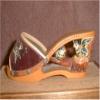
Bakya
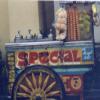
Sorbetes
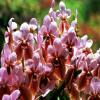
Waling Waling

Balut
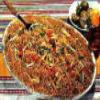
Pancit Lucban
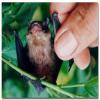
Lesser Flat-headed
Bat
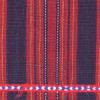
Bahag Cloth
|
|
Pinoy
na Pinoy
HALO-HALO!
Halo-halo
literally means, "mix-mix". And its is just that: a
mixture of sweetened fruits and beans, lavished with pinipig
(crisp flattened rice flakes), sugar and milk, topped by crushed
ice and ice cream. You know its summertime when halo-halo stand
start sprouting by the roadside and by the beach, all whipping
up their heavenly concoctions of such a refreshingly divine
dessert. You can make your own by selecting and mixing your
ingredients to make a perfect Halo-Halo. Halo-Halo is uniquely,
unforgettably Filipino!
KALESA
The
kalesa or karitela is a horse-driven carriage that was
introduced during the 18th century. It was used by Spanish
officials and the nobles as a means of transportation. The
Ilustrados, the rich Filipinos who had their own businesses,
used the kalesa not only for traveling but as a means a means of
transporting their goods as well.
BAKYA
Made
primarily of lightwood (laniti and santol trees), it is sculpted
with a slope and shaved to a smooth finish, then painted with
floral designs or varnished to a high sheen. The upper portions,
which are made of rubber or transparent plastic, are fastened to
the sides by thumb nails called "clavitos". The bakya
industry prospered during the 1930s when the Filipinos began
exporting these to the other countries.
SORBETES
This
sweet treat was concocted in the early 1920's, a time where a
single centavo could buy you almost anything. The process of
this ice cream making and selling it in carts with colorful
designs is still the same. Back in the old days, these ice cream
dealers bred their own cows and milked them with their own hands
to ensure the freshness and sanitation of the milk needed to
make the "dirty ice cream".
WALING
WALING ORCHIDS
With
some 800 to 1,000 species of orchids, the Philippines has one of
the richest orchid floras in the world. Philippine orchids come
in an amazing array of shapes, sizes and colors. Most grow only
in old-growth forest, often on branches of huge trees dozens of
meters above the forest floor.
EAT
BALUT!
Unhatched
duck's embryo, another unspeakable ethnic food to outsiders, but
oh, to indulge in guilty pleasures! Sprinkle some salt and suck
out that soup, with gusto.
PANCIT
HABHAB (Lucban)
Made
from rice flour, these local noodles acquired its name and
developed its unique attraction by the way it is eaten.
Otherwise known as Pancit Lucban, these noodles are hawked in
the streets and served on a piece of banana leaf, sans fork or
any other utensils. Thus, it is eaten straight from the leaf,
licking permitted :) "habhab"-style.
WORLDS
SMALLEST BAT
The
smallest bat in the world can be found in Subic, Common name :
Lesser Flat-headed Bat Scientific name : Tylonycteris pachypus :
Head to body (length): 6 cm - 6.2 cm
Forearm
length : 2 cm - 2.5 cm
Weight:
1 - 2 grams
Roosting
place : bamboo internodes
BAHAG
The
bahag or loin cloth of the Mountain Province is an exquisitely
hand-loomed piece of long cloth that is wrapped around the man's
middle. Much of the modern bahags have found their way to the
low land as table runners, serviettes, and other decor and
fashion accoutrements.
|
